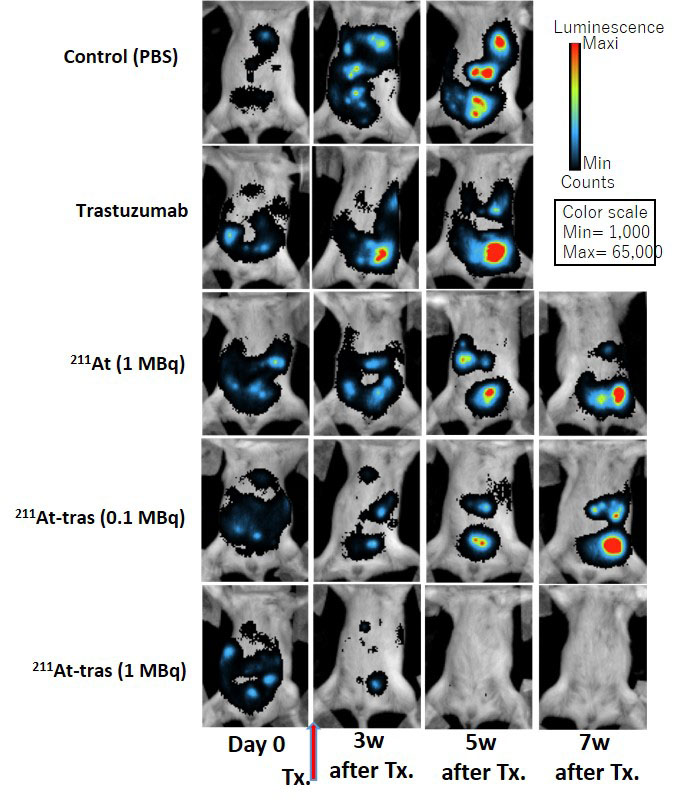Abstract
Gastric cancer (GC) is one of the leading causes of cancer-related death worldwide. The main cause of death from GC is peritoneal metastasis of GC (PMGC) and its associated peritoneal carcinomatosis. The prognosis of PMGC is extremely poor and no effective drug therapy is available. This study demonstrates that an intraperitoneal injection of the anti-HER2 antibody trastuzumab labeled with a radionuclide astatine-211 (211At) that emits highly cytotoxic α-particles (211At-trastuzumab) is a highly effective therapy for HER2-positive PMGC in a xenograft mouse model. Our results suggest that 211At-trastuzumab might be a promising radioimmunotherapeutic agent for targeted radiotherapy of HER2-positive PMGC.

Locoregional therapy with 211At-trastuzumab in the PMGC mouse model and tumor monitoring. Representative bioluminescence images of tumor growth in the PMGC mouse model treated with PBS (Control), unlabeled trastuzumab, 211At (1 MBq), or 211At-trastuzumab (211At-Tras; 0.1 or 1 MBq). Images were captured on the day before treatment (Day 0) or at 3, 5, or 7 weeks (w) after treatment (Tx). The color scale indicates the luminescence intensity per pixel. Only a single dose of 211At-trastuzumab (1 MBq) completely eradicated PMGC.
Reference
Locoregional therapy with α-emitting trastuzumab against peritoneal metastasis of human epidermal growth factor receptor 2-positive gastric cancer in mice
Huizi Keiko Li1,2,3, Yukie Morokoshi1, Kotaro Nagatsu4, Tadashi Kamada2,5, and Sumitaka Hasegawa1
1Radiation and Cancer Biology Team, National Institutes for Quantum and Radiological Science and Technology
2Graduate School of Medical and Pharmaceutical Sciences, Chiba University
3Research Fellow of Japan Society for the Promotion of Science (JSPS)
4Targetry and Target Chemistry Team, National Institutes for Quantum and Radiological Science and Technology
5Clinical Research Cluster, National Institutes for Quantum and Radiological Science and Technology
Contact
Sumitaka Hasegawa (hasegawa.sumitaka@qst.go.jp)
Radiation and Cancer Biology Team, National Institutes for Quantum and Radiological Science and Technology
